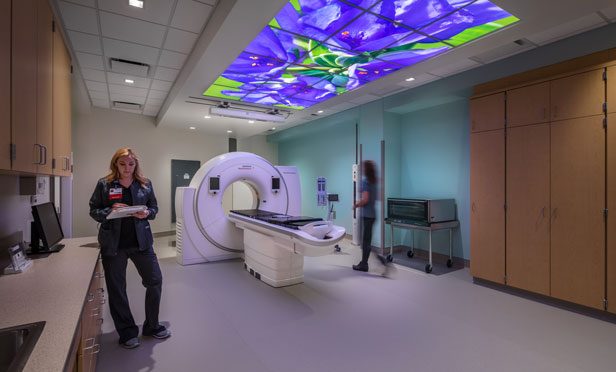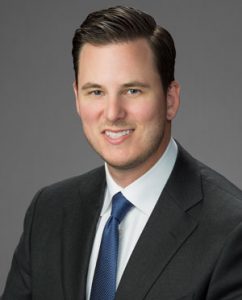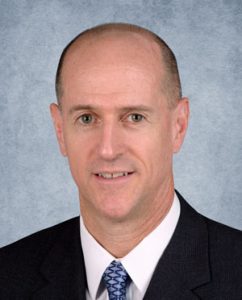This is the web version of a feature that originally appeared in Real Estate Forum magazine. To see the story in its original layout, click here.
Within a decade, one-fifth of this country's population will be age 65 or older. With more seniors comes a greater need for care services. It's little wonder, then, that healthcare is said to be one of the fastest-growing segments of the US economy.
Spending on healthcare has jumped 33% since the turn of the millennium, according to the JLL Healthcare Outlook. Today, the sector accounts for 17.9% of US gross domestic product, and more growth is on the horizon. From now through 2025, spending is expected to grow by another 5% or more annually.
This is great news for anyone in healthcare or related businesses, and has been a boon for job growth as well. JLL reports healthcare employment is enjoying faster growth than any other sector in the US. Today, 12.2% of the nation's workforce works in the field, and another 18% increase is expected over the next decade.
One of the primary drivers behind this growth comes from providers anticipating the need to serve the aging population, notes Trisha Talbot, a managing director at Newmark Knight Frank. “Legislation has also caused providers to expand, enhance or contract their practices to adapt,” she says. “These changes require providers to adjust their real estate needs accordingly.”
Although the sector is growing, not all areas of care are growing equally. Chris Wadley, an SVP at JLL, relates that in Houston, for example, there was a period of robust population growth in which major healthcare players opened hospitals across the metro. Today, he says, “we are seeing a slowdown of new hospital development. Systems in Houston are now infilling with outpatient facilities and retail locations.”
“Legislation has caused providers to expand, enhance or contract their practices to adapt. These changes require providers to adjust their real estate needs accordingly.”
Trisha Talbot | Newmark Knight Frank
AN EVOLVING LANDSCAPE
In looking across the landscape of patient-care facilities across the US, it's clear is that the image of traditional healthcare is also shifting. According to Wadley, cost pressures, increased demand and evolving consumer preferences are all forcing a change in how healthcare is delivered.
“Traditional approaches to real estate are proving too costly to keep up with. Hospital-centric care is giving way to an increase in off-campus locations and alternate care delivery models,” he observes. “Younger generations want on-demand service. At the same time, employers are battling insurance costs with creative provider partnerships, entering into direct subscription-for-services contracts.”
Intergenerational dynamics, a rising number of patient lives, and thin profit margins all point to the need for new types of real estate, in new and more locations, Wadley explains, adding that technology is supporting this evolution on all fronts from physician efficiencies to streamlining the patient experience.
The race is also on to meet patients where they are. The growing number of medical office buildings, healthcare-anchored retail centers, surgery centers and other healthcare specialty buildings is capturing that demand.
Providers are moving into retail centers or retrofitting retail spaces to move closer to patients, points out Alan Pontius, senior vice president and national director of specialty divisions at Marcus & Millichap. “We've observed more use of telehealth services within practices, so that doctors, especially specialists, can reach a broader network of patients.”
ARE HOSPITALS DEAD?
The migration from inpatient to outpatient care, which has been taking place over the past 20 years, has contributed to a decrease in the national occupancy rate for hospitals from 77% to 61% since 1980, according to data from the Medicare Payment Advisory Commission.
In response, healthcare organizations have developed locations that are easier for patients to access, such as facilities offering varied services, including physicians and ancillary services that are necessary to manage populations in one location.
“Traditional approaches to real estate are proving too costly to keep up with. Hospital-centric care is giving way to an increase in alternate delivery models.”
Chris Wadley | JLL
But that doesn't mean hospitals are dead.
Hospitals remain a crucial piece of the healthcare delivery puzzle, say JLL analysts, since they often serve as the anchors to a continuum of care outside of their campus. “The key word here is 'puzzle,' as the retailization of healthcare continues,” the report says. “Hospital campuses and outpatient care remain an anchor of the healthcare real estate ecosystem, with construction of new and expanded hospitals rising across the US.”
Even so, the focus of care continues to move away from the hospital, notes Jacob Gehl, senior managing director in the Los Angeles office of Blueprint Healthcare Real Estate Advisors. “Healthcare entrepreneurs will continue to innovate in ways that can save hospital systems time and money.”
Pontius agrees, noting that hospitals' purpose might be shifting. “We see that in the rise of outpatient surgery centers/services, a reduction in the number of hospital beds and the shuttering of some large hospital campuses. At the same time, we're seeing micro-hospitals emerge in some rural communities, signifying there is still a need for hospital services.”
Chicago-based Erik Tellefson, managing director of Capital One Healthcare, who finances both on and off campus medical office buildings, says that each have their respective advantages. Ultimately, he says, “we want to understand why the doctors are in that space and the likelihood that they will remain. We view hospitals and their campuses as the anchor of the healthcare ecosystem. There is absolutely a place both for on-campus inpatient and off-campus outpatient care. Each of them are a necessary part in the healthcare real estate sector.”
NKF's Talbot agrees, noting that acute care hospitals and outpatient care will always be required. “There are patients that require a lot of healthcare services and patients that do not. If a patient uses a lot of services, most likely cost-effective and convenient access will be important. If a patient only needs an annual check-up and urgent care services for the occasional flu, their concerns are different.”
“Healthcare entrepreneurs will continue to innovate in ways that can save hospital systems time and money.”
Jacob Gehl | Blueprint Healthcare Real Estate Advisors
She adds that healthcare practices to serve both needs and those in between are required. The challenge, though, is how practices are deciding what to offer and what demographic they want to serve.
From a technology perspective, Tellefson explains, tele-health is becoming more prevalent in the healthcare market today. He says that this is “a positive shift for the medical office industry as the likely result from these services is that patients end up going in for treatment to a hospital or medical office setting.”
Emerging technologies and demographics are shifting delivery of care models, says John Wilson, president of HSA PrimeCare. “Millennials are focused on preventive healthcare and wellness and are demanding higher levels of convenience and technology, while the rapidly aging population is requiring providers to shift to a patient-centered delivery of care model with smaller, cost-efficient medical clinics doing work that was once only done in a hospital.”
EVERY SHIFT BRINGS CREATIVITY
Many in the healthcare space are responding to the challenges ahead. “Providers are getting creative with real estate strategy to capture growing patient demand—and that's delivering more settings for care,” the JLL report says.
A perfect example of that creativity, according to Blueprint's Gehl, was clear during a recent meeting he had with an urgent care provider in Los Angeles. While he didn't name the specific provider, he says it is looking to build clinics in the first floors of assisted living communities, and he expects this approach to continue.
The same holds true for practices looking to find creative ways to locate their offices near a serving hospital, adds Talbot. Adaptive reuse of retail space that's gone dark, developing pad sites and absorbing in-line retail spaces have all become popular. “Retail offers providers to offer its patients visibility, parking and convenience next to other amenities,” she says.
Developers, too, are increasingly focused on supporting patient-centered design for providers. One of HSA PrimeCare's key projects, for example, Froedtert & the Medical College of Wisconsin Drexel Town Square Health Center in Oak Creek, WI, south of Milwaukee, is a new primary and specialty health care center. The 109,000-square-foot space with a 425-space parking garage recently opened its doors and offers family and pediatric medicine, obstetrics and gynecology, urgent care and specialty care including dermatology, orthopedics and sports medicine, neurology, plastic surgery and eight more specialties. There is also an outpatient surgery center, cancer center, pharmacy and lab services.
“Hospitals and their campuses anchor the healthcare ecosystem. There is a place for both on-campus inpatient and off-campus outpatient care.”
Erik Tellefson | Capital One Healthcare
Its location in a residential area also creates a close-to-home option for patients. The combination of services is meant to be a one-stop shop for patients. As an added benefit, hospital staff benefit from this centralized location with nearby restaurants, shops and a newly built library and city hall. As Wilson explains, “HSA PrimeCare takes the patient focus into account when working with MOB providers by mapping out a proposed clinic's expected customer base, and then calculating parking ratios, access routes and visibility.”
In addition, he says, “dual-access exam rooms support the thoughtful design with an area designed with an oval-shaped shared workspace for hospital staff and doctors, surrounding that area are the exam rooms and the outer-most layer where patients check-in. Patients head directly to the exam room through one door, and then doctors enter through the second door. This design cuts down on wait times, and provides an uninterrupted workspace for staff and allows doctors to discuss work.”
INVESTORS PLACE THEIR BETS
On the capital side, it is increasingly flowing to MOBs, says the JLL healthcare report. “With fundamentals that are more cycle-resistant than other, more traditional property sectors, investors are doubling down on this class of buildings for its stability and bright prospects for continuing strong performance. There's a compelling case for continued capital interest.”
Tellefson, a lender, says that this year has been his company's “most robust”—he anticipates even more growth in transactions and development in the near future. Several years ago, he says, the landscape largely consisted of REITs and private investors, but that a relatively recent aspect of the medical office segment is the institutional capital that continues to flow into the space. “Investors are looking to purchase core assets, both larger, diversified portfolios as well as single assets and smaller portfolios with occupancy and NOI growth.”
Investors are also looking to place capital in facilities occupied by financially strong healthcare practices, Talbot adds. “I see investors spending more time reviewing financial statements, interviewing the providers/principals of a practice and understanding the supply and demand of competitive medical properties surrounding a property prior to acquisition.”
“Depending on location and tenant credit characteristics, off-campus locations will see valuations similar to best-in-class, on-campus locations.”
Alan Pontius | Marcus & Millichap
According to JLL, MOBs attract a high-quality tenant base. As more physician practices move to hospital ownership, an MOB's hospital affiliation, or lack thereof, is increasingly important. “From the perspective of investors, hospital affiliation may provide greater overall tenant stability and credit ratings as the hospitals themselves become the lessees.”
Marcus & Millichap's Pontius says that medical office buildings leased by a major provider with several years remaining on the lease are in high demand. “There used to be a gap in returns for properties depending on location, with on campus properties commanding a premium. Today, we see a substantial narrowing of that gap, and depending on location and tenant credit characteristics, off campus locations will see valuations similar to best in class, on campus locations.”
Some investors, Pontius adds, “will purchase medical office assets backed by a private physician or group, but they typically include personal guarantees by the doctors and cap rates are generally 100 basis points higher than for properties leased by major hospital systems or healthcare groups.”
WHAT'S NEXT?
JLLs says we can expect the “retailization” of healthcare to continue as healthcare moves away from the hospital-as-hub model, healthcare will roll even further out of the hospital doors and into community settings. “Freestanding emergency rooms, urgent care and walk-in clinics are already proliferating in valuable retail locations, and we're also beginning to see interesting new partnerships being formed to bring integrated wellness and preventative themes into established retail locations.”
A decade ago, JLL says that retailization was driven by the recession and the value healthcare companies saw in scooping up vacant big-box spaces. Now, the report says, this approach is becoming more of a strategic move, with developers considering healthcare tenants for new mixed-use developments from the beginning.
Healthcare is no longer an afterthought and will increasingly become a key piece in the future retail puzzle, JLL adds. Like Talbot's views, one reason JLL is so confident about the future trajectory is recent, mold-breaking momentum in outpatient revenue compared with inpatient. “Gone are the days of the inpatient-facility monopoly. In its place, we see a more balanced mix of sprawling hospitals as well as lower-cost settings of care.”
 Froedtert & the Medical College of Wisconsin Drexel Town Square Health Center in Oak Creek, WI, is a brand new healthcare center. Developed by HSA PrimeCare, the 109,000-square-foot space offers a close-to-home “one-stop shop” for patients who are seeking a variety of care and services.
Froedtert & the Medical College of Wisconsin Drexel Town Square Health Center in Oak Creek, WI, is a brand new healthcare center. Developed by HSA PrimeCare, the 109,000-square-foot space offers a close-to-home “one-stop shop” for patients who are seeking a variety of care and services.Millennials are Redefining Healthcare
Rather than a one-size-fits-all hospital campus, the millennial generation wants more convenient locations, with smaller, more concentrated offerings, and are self-directed and open at times that work for them. That is according to a recent JLL Healthcare Outlook Report. “When they find the right fit, this brand-loyal generation is likely to keep the faith.”
These preferences hold significant weight in an industry where young people are quickly becoming the dominant healthcare consumers, both for themselves and for their families as caregivers, the report says. “The majority of babies born in the US this year (82%) were born to millennial parents, and many are looking to establish a relationship with a healthcare system for the first time,” the report says. “Intergenerational dynamics, rising patient numbers in general and intense cost pressure all point to the need for new types of real estate, in new and more locations.”
Can Staffing Keep Up with Needs?
According to Alan Pontius, SVP and national director of specialty divisions at Marcus & Millichap, medical school enrollment rose nearly 19% over the past 10 years. Graduation rates have also advanced, with a 19% increase since the 2007-2008 school year. In addition, healthcare occupations are expected to grow 18% from 2016 to 2026 as 2.4 million jobs are created, more than any other employment sector.
© Touchpoint Markets, All Rights Reserved. Request academic re-use from www.copyright.com. All other uses, submit a request to [email protected]. For more inforrmation visit Asset & Logo Licensing.













